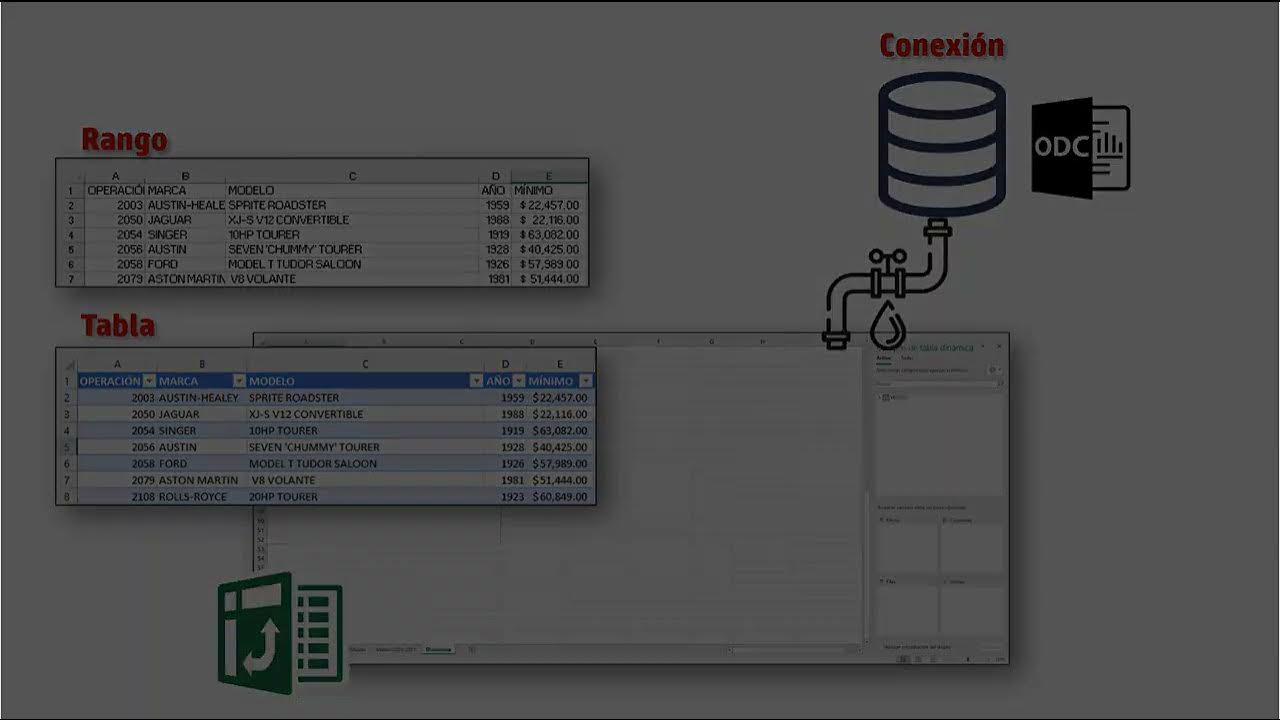Statistik : Penyajian Data - Part 3
Summary
TLDRThis video script provides an in-depth explanation of presenting data using tables. It covers two types of tables: row-column tables, where data is organized into rows and columns to show attributes and their counts, and frequency distribution tables, which categorize data into classes or intervals to show frequency. The script highlights the process of constructing these tables, including determining class intervals, calculating frequencies, and organizing data for clearer analysis. This lesson is essential for anyone learning how to display and interpret data effectively using tables in statistics.
Takeaways
- 😀 Data can be presented in various forms, and one common method is using tables, which can include rows and columns.
- 😀 Tables with rows and columns represent data attributes, where columns display attributes and rows display their values.
- 😀 A simple example of a table shows the number of televisions in a region over the years 2011-2015.
- 😀 Tables can also be used to present data with more than one attribute, such as items in a warehouse categorized by condition (damaged or good).
- 😀 In a table, each column reflects a specific attribute, such as the type of item (TV, radio, monitor), while the rows show data related to those attributes (good or damaged items).
- 😀 Frequency distribution tables categorize data based on certain intervals or classes, which are crucial when data needs to be summarized in broader ranges.
- 😀 There are two main types of frequency distributions: numerical and categorical. Numerical distributions show raw data, while categorical distributions group data into predefined classes or categories.
- 😀 A frequency distribution table can be absolute (based on exact frequency) or relative (indicating frequency in percentage terms).
- 😀 To create a frequency distribution, you first determine the number of classes, class widths, and boundaries. This helps group the data into meaningful intervals.
- 😀 A well-structured frequency distribution can enhance data interpretation by showing trends and patterns across different classes or categories.
Q & A
What are the two main types of data presentation discussed in the video?
-The two main types of data presentation discussed are tables with rows and columns, and frequency distribution tables.
How does a table with rows and columns present data?
-A table with rows and columns presents data by using columns to represent data attributes and rows to display the corresponding values for those attributes.
Can a table with rows and columns handle multiple attributes?
-Yes, a table with rows and columns can handle multiple attributes. Each column represents a different attribute, and each row corresponds to the data for each attribute.
What is the purpose of a frequency distribution table?
-A frequency distribution table organizes data into classes or categories to show how frequently each value or range of values occurs.
What are the two types of frequency distribution mentioned in the script?
-The two types of frequency distribution mentioned are numeric frequency distribution and categorical frequency distribution.
What is the difference between numeric and categorical frequency distributions?
-A numeric frequency distribution organizes data based on numerical intervals, while a categorical frequency distribution organizes data into specific categories or classes.
What does the script explain about determining the number of classes for a frequency distribution?
-The script explains that the number of classes can be determined using a formula: 1 + 3.3 * log(n), where 'n' is the number of data points.
How is the class width or interval determined for a frequency distribution?
-The class width is determined using the formula: (largest value - smallest value) / number of classes. It is then rounded up to ensure consistency across intervals.
Why is it important to round up the class width or interval when creating a frequency distribution?
-Rounding up the class width ensures that each interval is of equal size, maintaining consistency in the distribution and making it easier to analyze the data.
What is the role of class boundaries in a frequency distribution?
-Class boundaries define the minimum and maximum values for each class. The lower boundary is the smallest possible value in the class, and the upper boundary is the largest value.
Outlines

Cette section est réservée aux utilisateurs payants. Améliorez votre compte pour accéder à cette section.
Améliorer maintenantMindmap

Cette section est réservée aux utilisateurs payants. Améliorez votre compte pour accéder à cette section.
Améliorer maintenantKeywords

Cette section est réservée aux utilisateurs payants. Améliorez votre compte pour accéder à cette section.
Améliorer maintenantHighlights

Cette section est réservée aux utilisateurs payants. Améliorez votre compte pour accéder à cette section.
Améliorer maintenantTranscripts

Cette section est réservée aux utilisateurs payants. Améliorez votre compte pour accéder à cette section.
Améliorer maintenantVoir Plus de Vidéos Connexes

Statistika - Membaca dan Menyajikan data, Poligon Histogram Ogive

02 03 Cómo se crea una Tabla dinámica

11 Most Important Tools in Excel | Malayalam Tutorial

Boyce-Codd Normal Form / Normalisasi BCNF | Basis Data

PENYAJIAN DATA DALAM BENTUK TABEL & DIAGRAM || PENGOLAHAN DATA

FPGA Architecture | Configurable Logic Block ( CLB ) | Part-1/2 | VLSI | Lec-75
5.0 / 5 (0 votes)
